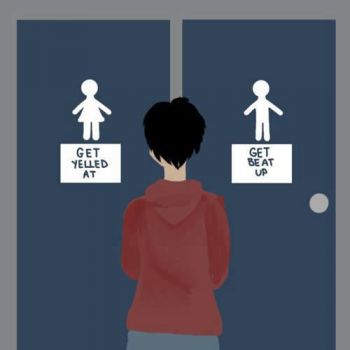
Equality and Transgender rights have long been in a battle, securing equal rights and opportunities for all persons under the law. There is still a long way to go, with Caitlyn Jenner’s transformation still making headlines and transgender rights activists still fighting for equal rights. Recently, South Dakota made headlines when its governor Dennis Daugaard vetoed HB 1008, which would have “required transgender students in the state’s public schools to use bathrooms and locker rooms that matched their sex at birth.” The move was hailed as a victory in the LGBT community, with Kris Hayashi of the Transgender Law Center stating, “Governor Daugaard made the right call in vetoing this dangerous legislation, sparing South Dakota the risky and costly experiment of becoming the first state to mandate discrimination against transgender youth in violation of federal law and student privacy and well-being.” The conversations about these laws come in during a time where change is happening rapidly, with 150+ schools putting up gender neutral restrooms. With nearly 0.3 percent, or roughly 700,000 adults of the U.S. population considering themselves transgender and there being over fifty ways to consider your gender on popular social media websites such as Facebook, conversations about how to properly accommodate transgendered persons are becoming more of a heated debate.
The conversation on Transgender rights becomes more of a complicated issue when you consider the rest of the U.S. population who may not be transgender. Many of the persons who are against transgender people using the same restrooms as the sex that they feel that they are can stir up multiple complications in the future. This is exemplified by Nicole Russell (a contributor to the Federalist online magazine) when she states, “Policies that allow transgenders to use opposite-sex bathrooms still infringe on the privacy rights of non-transgender students. If equality is truly the goal, then allowing a transgender to use the bathroom with members of the opposite sex cannot be the answer, because it doesn’t treat both parties equally. Given the aforementioned lawsuits, I don’t think the goal of the LGBTQ community is to have equal rights, but to monopolize the rights of everyone else.” The vendetta then is how do we ensure the freedom and equal rights of transgendered people to use the restroom as they feel comfortable with without infringing on the rights and freedom of people who are not transgender.
The current policies are leaning more towards finding methods to protect those who consider themselves to be transgender, while not necessarily protecting the freedoms of those who are not. According to the Human Rights Campaign (HRC), “the District of Columbia requires single-occupant restroom facilities in any public space (e.g., restaurants) to be gender neutral — restrooms designed for use by one individual at a time may not have a specific gender designation with “male” or “female” signage or icons — but does not require employers to have single-occupant restrooms instead of another type.”This same type of law has been passed in Philadelphia and New York, with more cities and states imposing gender-neutral restrooms.
Other bills like one in Indiana which would fine and imprison Transgender people for using the wrong restroom that did not match the one that correlated to their gender on their birth certificate are also being placed. According to the Huffington Post, the law would also affect transgender students in schools, which would “directly violate[s] Title IX, which prohibits discrimination on the basis of sex in federally-funded education programs or activities.” With conversations and tempers rising about the treatment of transgender people and the rights of those who do not consider themselves transgender reaching the tip of the iceberg, there are ways that we can mediate the restroom dilemma while keeping every person’s rights intact.
With the introduction of gender neutral and family restrooms making their way to being known across the country, we should implement these gender neutral restrooms everywhere, including restaurants, schools, workplaces, etc. for transgender persons to use, while keeping transcribed male and female restrooms open for those who are not transgender. This would allow for transgender people to use bathrooms without discrimination staying in place, since they would have the right to use that bathroom while not being discriminated against. This would also allow for those who do not consider themselves transgender (roughly 98% of the population) to be able to use the bathroom aligning with the gender they were given at birth. As Nicole Russell stated, “Adults should strive to make the lives of children both at home and school as peaceable as possible. But not to the point where making peace, accepting different lifestyle choices, and paving a path towards equality becomes a mobocracy of laws and lawsuits that, while supposedly liberating one group of minorities (in the statistical sense), entraps and effectually marginalizes everyone else.” Freedom and stability do not always go hand in hand, and it takes work to ensure that both groups get the recognition and the freedoms they desire. Although it would cost cities more money at first, these restrooms would allow for transgender people to have the equal rights that as fellow human beings, they are entitled to, while keeping the rights of the rest of the population well and protected in the long run.
Take Action: Learn more about Transgender Rights at the Human Rights Campaign official website



